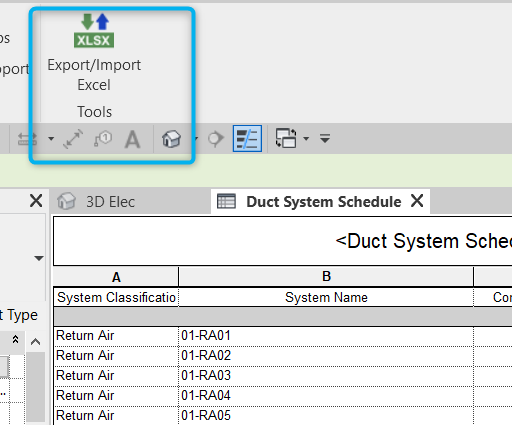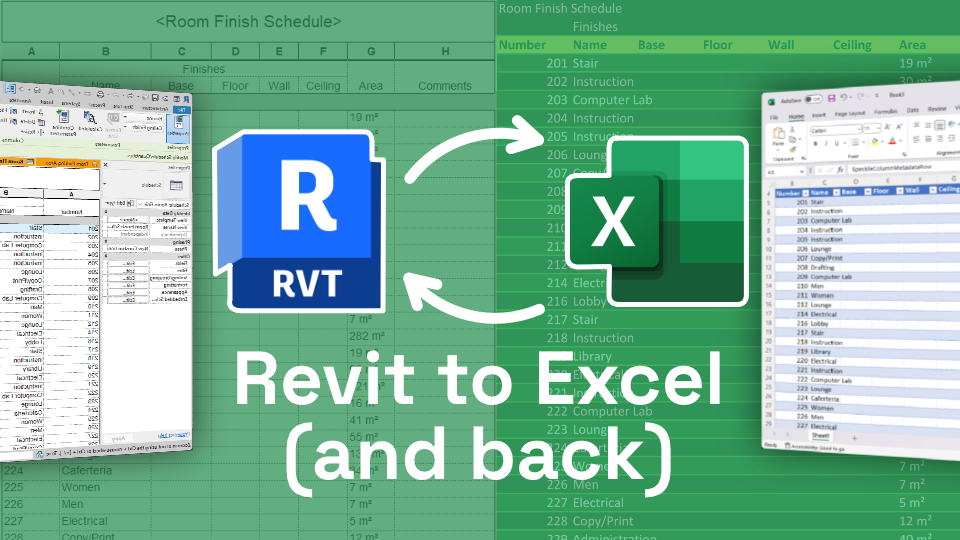Revit Add Ins: Expanding Your Layout Capacities
Excel-to-Revit: A Game-Changing Workflow for Architectural Style - Introducing the Keys
Introducing excel-to-revit, the game-changing process that will transform your design process. With excel-to-revit integration, you can simplify your building style, unlock effectiveness, and maximize collaboration within your group. Obtain prepared to take your architectural design to the following degree with excel-to-revit!
The Power of Excel-to-Revit Combination

Imagine the ease of being able to edit and upgrade task data in Excel, and immediately see those adjustments shown in your Revit model. No more hand-operated data access or tiresome updates. With Excel-to-Revit integration, you can save time and lower mistakes by leveraging the power of Excel's features and formulas to immediately generate exact data in Revit.
Not just does this integration improve performance, but it additionally enhances cooperation among group members. You can quickly share Excel files with associates, that can then import the information into their Revit versions. This promotes a smooth exchange of details and makes sure that every person is collaborating with one of the most up-to-date information.

Streamlining Building Design With Excel-To-Revit
Enhancing architectural style is made easier with using Excel-to-Revit (revit plugins). With this effective integration, you can enhance your operations and save beneficial time throughout the design process. By leveraging the capacities of Excel and Revit, you can perfectly move information between both systems, getting rid of the demand for manual data entrance and decreasing the danger of mistakes
Excel-to-Revit allows you to import and export data easily, allowing you to conveniently upgrade and modify your building layouts. You can develop routines, calculate quantities, and create records in Excel, and then transfer that data straight right into your Revit version. This integration makes sure that your layout details is constantly up-to-date and synchronized, eliminating the need for manual updates and decreasing the possibilities of variances.
By utilizing Excel-to-Revit, you can likewise take advantage of the powerful computational capabilities of Excel. You can perform intricate estimations, analyze information, and automate repetitive tasks, all within Excel. Then, with simply a couple of clicks, you can import the outcomes back right into Revit, permitting you to make enlightened layout choices and maximize your building styles.
Opening Effectiveness: Checking Out the Excel-to-Revit Process
Optimize your efficiency by perfectly integrating Excel and Revit for a much more reliable operations. With the Excel-to-Revit process, you can unlock a whole brand-new degree of effectiveness in your architectural design procedure. By making use of the power of Excel's information administration capabilities and combining it with the adaptability and accuracy of Revit, you can enhance your design procedure and conserve important time.
One of the vital advantages of this integration is the ability to import and export information between Excel and Revit. This implies that you can conveniently move project details, such as space schedules or product amounts, from one software application to the other, removing the requirement for manual information entry and reducing the possibilities of errors. You can additionally produce custom solutions and calculations in Excel to automate recurring tasks and execute intricate calculations, which can after that be flawlessly integrated right into your Revit models.
In Addition, the Excel-to-Revit process permits much better control and collaboration in between employee. With Excel serving as a main information hub, numerous team members can function on different elements of the task concurrently, upgrading and sharing info in real-time. This not just improves communication yet also makes sure that every person is working with the most current information, eliminating the danger of disparities.
Making The Most Of Partnership: Excel-to-Revit for Architectural Teams
By flawlessly integrating Excel and Revit, architectural teams can considerably boost collaboration and achieve much more reliable layout outcomes. When using this powerful process, you can quickly move information in between Excel spread sheets and Revit versions, streamlining the design process and boosting interaction among staff member. With Excel-to-Revit integration, you can effortlessly import project data, such as room schedules, material quantities, and project parameters, directly into Revit, eliminating the need for manual data entry and reducing the chances of mistakes. This smooth link permits real-time updates, making sure that everybody is collaborating with the most updated information and avoiding discrepancies in between various papers.
Additionally, by leveraging Excel's effective estimation capacities, find more info you can do complex estimations and analysis on your design data, driving and giving important understandings notified decision-making. This assimilation also allows you to export information from Revit to Excel, allowing you to develop thorough reports, graphes, and graphs for discussions and analysis. This collaborative operations promotes reliable interaction and coordination amongst group members, as Excel acts as a main center for data monitoring and sharing.
Overall, by welcoming the Excel-to-Revit workflow, building groups can achieve higher degrees of collaboration, efficiency, and precision in their layout process. revit tools. This assimilation equips groups to function together effortlessly, making you can look here certain that everybody is on the very same page and adding to the success of the project
Revealing the Keys of Excel-to-Revit Integration

One of the tricks of Excel-to-Revit integration is the ability to take advantage of the power of solutions and estimations in Excel to drive parameters and generate complicated geometries in Revit. You can connect Excel spread sheets to Revit family members, allowing you to input data directly into the spreadsheet and have it instantly upgrade in the Revit version. This improves the style process and makes sure precision and uniformity throughout the task.
One more trick is the ability to develop personalized timetables and reports in Excel, using information drawn out from Revit. This allows you to imagine and assess job information in a manner that is not feasible within Revit alone. You can quickly create amount take-offs, price estimates, and project timelines, providing valuable understandings for decision-making and task monitoring.
Furthermore, Excel-to-Revit combination allows efficient cooperation amongst staff member. Multiple customers can function on the exact same Excel spreadsheet at the same time, making it easier to coordinate and track adjustments. You can likewise utilize Excel's commenting feature to give responses or connect style revisions.
Final Thought
So there you have it, the keys of excel-to-revit assimilation have actually been unveiled. This game-changing workflow has the power to improve architectural style, unlock effectiveness, and maximize partnership for architectural teams. By integrating the power of Excel and Revit, designers can now work more efficiently, conserve time, and generate far better layouts. Why wait? Begin incorporating excel-to-revit integration into your architectural layout procedure today and change the means you function.
With just a few clicks, you can import the outcomes back right into Revit, enabling you to make informed design choices and enhance your architectural designs.
By making use of the power of Excel's data management capacities and integrating it with the versatility and precision of Revit, you can simplify your style process and conserve important time.
By seamlessly integrating Excel and Revit, building groups can significantly boost partnership and achieve extra effective design results. When using this effective workflow, you can conveniently transfer information between Excel spread sheets and Revit versions, improving the layout process and boosting communication amongst team participants.Additionally, by leveraging Excel's effective calculation capacities, you see post can carry out intricate calculations and evaluation on your style data, driving and giving useful understandings educated decision-making.